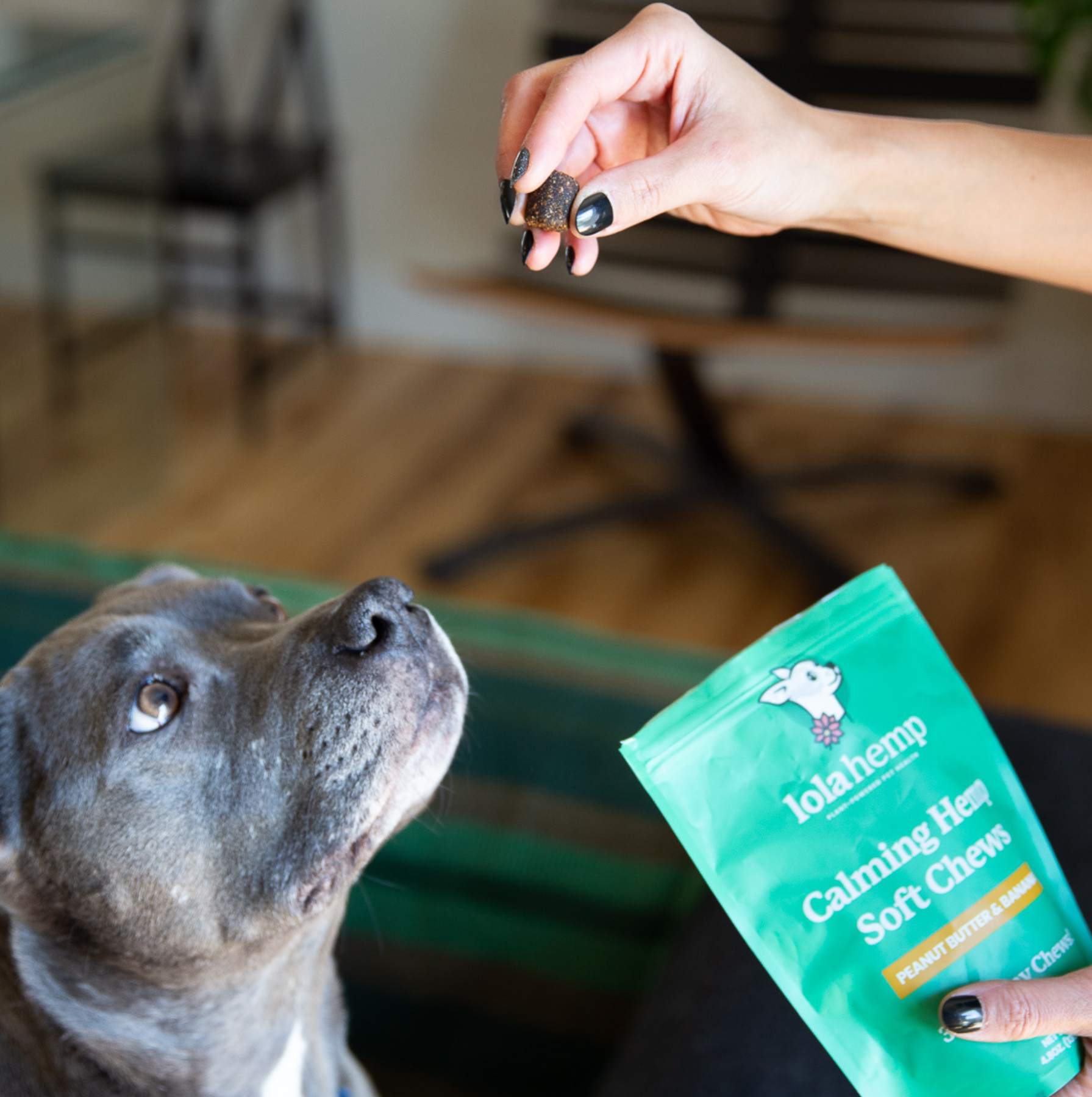Just like humans, dogs crave attention. While it's natural for your furry friend to want to interact with you, sometimes things can escalate to a degree that disrupts your daily life.
This article will explore how to stop attention-seeking behavior in dogs and maintain a healthy, happy relationship with your pet. Whether it's by training or a calming supplement, or both, this article should point you in the right direction.
- Why Do Dogs Develop Attention-Seeking Behavior?
- 4 Corrections for Attention-Seeking Dogs
- Frequently Asked Questions About Attention-Seeking Behavior in Dogs
- What causes attention-seeking behavior in dogs?
- Is attention-seeking the same as separation anxiety?
- How do I stop my dog from pawing, whining, or jumping for attention?
- Can training help reduce attention-seeking in dogs?
- When should I seek professional help for my dog's behavior?
- Do calming supplements help with attention-seeking?
Why Do Dogs Develop Attention-Seeking Behavior?
Common signs of problematic attention-seeking in dogs include:
- Excessive barking or whining
- Jumping up on people
- Constant pawing or nudging
- Destructive behavior when left alone
- Following you around
Attention-seeking behavior in dogs is related to conditions like separation anxiety, but they are not exactly the same.
For example, dogs with separation anxiety will misbehave when you're leaving the house or destroy furniture while you're away. In contrast, attention-seeking dogs are more likely to pester you throughout the day while you're at home.
Whether your dog struggles with attention-seeking, separation anxiety, or something else, correctly identifying the problem is essential. Consult your veterinarian to diagnose your dog's anxiety or other issues accurately, check for underlying medical issues, and build an effective treatment strategy.
4 Corrections for Attention-Seeking Dogs
Addressing your dog's inappropriate attention-seeking will take a combined approach and a lot of patience. Making small changes every day will help your dog build lasting good habits.

Here are our top tips for reducing your dog's attention-seeking behavior.
1. Consider Basic Needs
As we've discussed, attention-seeking in dogs is an attempt to communicate. However, knowing what your dog wants can be challenging. So, it's best to start with your dog's basic needs.
Well-behaved dogs share some key traits: they are physically healthy, have a predictable schedule, and receive adequate physical and mental stimulation.
Dogs that are sick are unlikely to respond to new training strategies. Similarly, exercise can help your pup relax and reduce attention-seeking behavior. Our furry friends are also creatures of habit.
Set mealtimes and playtimes can reassure your dog and lead to less attention-seeking.
2. Ignore the Bad, Reward the Good
Once your dog's basic needs are met, the thing to try is ignoring the behavior you want to discourage. In other words, avoid giving your dog any attention (positive or negative) when they paw your lap, jump up, or whine.
Some dogs will get the message and settle down nearby, while other dogs whine harder. If your pup doubles their efforts, continue ignoring the unwanted behavior as best you can.
Sending clear signals with your body language will help your dog understand your intent. You can look away, turn your face and body away, and fold your arms to clarify the message. For pushier dogs, you may need to stand up.
In addition to ignoring attention-seeking, reward your dog for good behavior. This step can be as simple as praising your dog or giving them a healthy treat when they're calm and quiet.
3. Teach a New Command
You may be thinking, "When I praise my dog for being calm, they get up and come over to seek attention!" Your dog may get confused in this way at first, but don't worry. Teaching a simple new command will help you and your pup communicate.
When you'd like your dog's attention-seeking behavior to stop, use a gentle but firm voice to say, "That's enough." At the same time, pat your dog on the top of the head three times (2).
Using the same number of head pats every time will help your dog recognize the signal: you want to be left alone. If your dog confuses these pats with petting, you can point across the room while saying "that's enough" instead.
4. Consider Professional Help
While attention-seeking behavior in dogs can be frustrating, it's essential to approach the situation with patience and understanding. Remember, your dog isn't trying to annoy you—they're just trying to communicate their needs.
Dog behavior advice can be overwhelming, so remember to keep it simple. Try one new strategy at a time, and if there's no progress after a few weeks, move on to something new.
Whether you're just starting out or have tried everything, consider getting help from a professional. A veterinary behavior specialist or qualified dog trainer can provide tailored advice for your dog's unique needs. With time, patience, and consistency, you can help your dog become a well-behaved, content member of the family.
Frequently Asked Questions About Attention-Seeking Behavior in Dogs
What causes attention-seeking behavior in dogs?
Attention-seeking can develop from boredom, lack of stimulation, inconsistent routines, anxiety, or unmet physical or emotional needs.
Is attention-seeking the same as separation anxiety?
No. Separation anxiety occurs when you're gone, while attention-seeking happens primarily when you're home and your dog constantly demands interaction.
How do I stop my dog from pawing, whining, or jumping for attention?
Ignore unwanted behaviors consistently while rewarding calm, quiet behavior. Meeting basic needs and providing exercise are also essential.
Can training help reduce attention-seeking in dogs?
Yes. Teaching cues like “That’s enough” and reinforcing desired behaviors can help your dog understand when it's time to settle.
When should I seek professional help for my dog's behavior?
If attention-seeking persists despite consistent training, consulting a trainer or veterinary behaviorist can provide tailored guidance.
Do calming supplements help with attention-seeking?
Some dogs benefit from calming supplements as part of a combined approach with training and routine adjustments.








